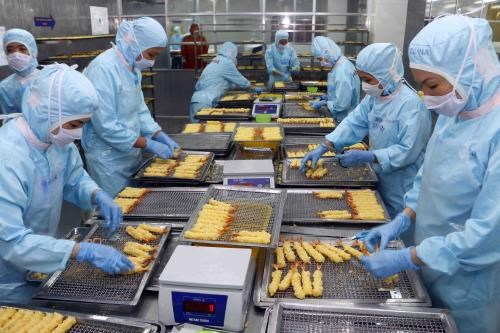Control of seafood exports to Japan must keep strict: experts
Though seafood exports to Japan grew in the first half of 2017, businesses must not neglect product quality control since this market has great influence on the prestige of Vietnam’s aquatic products
 Workers at Seavina Company (Source: VNA)
Workers at Seavina Company (Source: VNA)HCM City (VNA) – Though Vietnam’s seafood exports to Japan grew strongly in the first half of 2017, businesses must not neglect product quality control since this market has great influence on the prestige of Vietnam’s aquatic products in the world.
The recommendation was made by many experts at a workshop on food safety regulations on seafood exports to Japan held in Ho Chi Minh City on July 5.
Nguyen Hoai Nam, Vice Secretary General of the Vietnam Association of Seafood Exporters and Producers (VASEP), said Japan is one of the three biggest export markets of Vietnamese aquatic products, following the US and the EU. Aquatic shipments to this market were estimated at 590 million USD in the first six months of 2017, up 31 percent year on year.
The appreciation of the Japanese Yen, stronger demand for aquatic products in Japan and improved quality of Vietnamese products were the main reasons for the export growth.
Japan has replaced the US to become the leading market of some aquatic products, especially shrimp, Nam said.
However, despite quality control efforts, some batches of aquatic products were still warned about the excess of antibiotic and chemical residues by Japan.
Le Anh Ngoc, an official of the National Agro-Forestry-Fisheries Quality Assurance Department (NAFIQAD), said Japan is examining all batches of some aquatic products from Vietnam.
He said exporters should thoroughly learn about Japan’s regulations, especially those on antibiotics and examination at border gates. They need to tighten the control of quality at material supply facilities while promptly conducting investigations and remedies if their goods batches are warned.
Prof. Fumio Sakamoto from Kagoshima University, a member of Japan’s committee for food quality inspection, said the management of the aquaculture environment and the social responsibility of processing businesses need to be enhanced to improve material quality and product prices, thereby sustainably developing Vietnam’s fishery sector.-VNA













